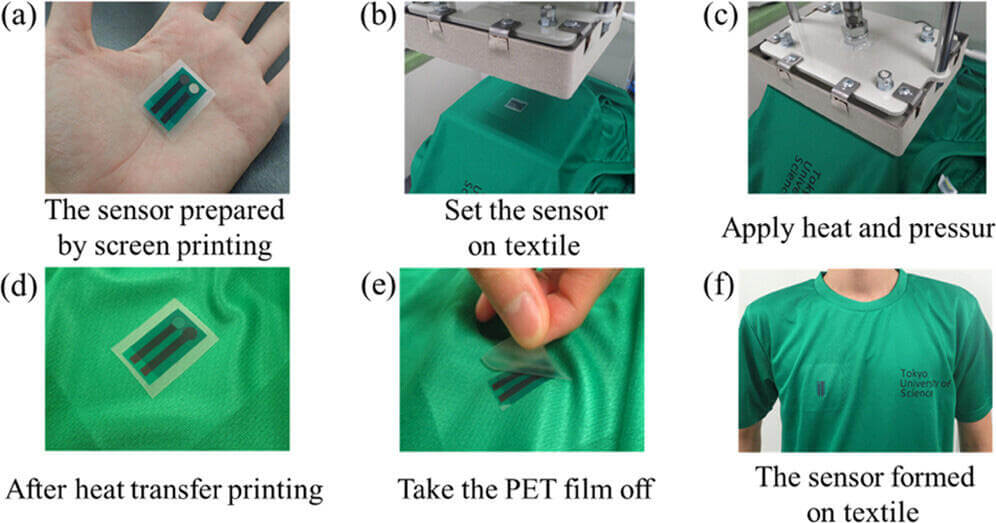TOKYO — Imagine wearing a sensor embedded in your clothing that can measure your vital signs while you move. This innovative tech could soon be a reality. Researchers at the Tokyo University of Science (TUS) in Japan have developed a groundbreaking sweat biosensor that opens up new possibilities for real-time health monitoring.
Wearable sensors have emerged as a prominent application of miniaturized electronics. These devices, typically worn directly on the skin, can monitor vital signs such as heart rate, blood pressure, and muscle activity. However, designing chemical sensors for detecting substances in bodily fluids has proven to be more complex due to issues of skin irritation and accuracy when integrated into wearable textiles.
Addressing these challenges, the research team at TUS leveraged a technique called “heat-transfer printing” to affix a thin, flexible chloride ion sensor onto a textile substrate. This innovative approach provides several advantages over traditional methods.
“The proposed sensor can be transferred to fiber substrates and incorporated into textiles such as T-shirts, wristbands, and insoles. Further, health indicators such as chloride ion concentration in sweat can be measured by simply wearing them,” explains Dr. Shitanda in a media release.

By transferring the sensor outside of the clothing piece, skin irritation is prevented. The wicking effect of the textile aids in distributing sweat evenly between the sensor’s electrodes, ensuring stable electrical contact. Additionally, the printing process on a flat surface before transferring eliminates the common issue of blurred edges that occur when directly printing onto a textile.
The team carefully selected materials and electrochemical mechanisms to minimize the risk of allergic reactions for the wearer. They conducted various experiments using artificial sweat to validate the sensor’s accuracy in measuring chloride ion concentration. Importantly, no interference was observed from other ions or substances typically present in sweat.
To assess its practicality, the team tested the sensor on a volunteer who engaged in a 30-minute exercise on a static bicycle. Measurements of perspiration rate, chloride ion levels in blood, and saliva osmolality were taken every five minutes and compared with the data collected by the sensor. The wearable sensor reliably measured the concentration of chloride ions in sweat. Moreover, the sensor has the capability to transmit data wirelessly, enabling real-time health monitoring.
“Since chloride is the most abundant electrolyte in human sweat, measuring its concentration provides an excellent indicator of the body’s electrolyte balance and a useful tool for the diagnosis and prevention of heat stroke,” Shitanda says.
This breakthrough in sweat biosensor technology paves the way for advanced healthcare devices that offer precise and convenient monitoring of important health indicators. By harnessing the power of miniaturized electronics and integrating them into wearable textiles, researchers are pushing the boundaries of healthcare innovation to improve disease prevention and overall well-being.
The study is published in the journal ACS Sensors.

Really?? I feel the title of the article appears to say if you sit, there is absolutely no hope because exercise does not help. But the researcher seems to have said exercise alone does not reverse the harm of a long sitting period. It’s different than exercise does not help. How about many other published studies about adding exercise every 30-60 min of sitting helps reduce harms from sitting?
Iron on? Sounded like they were talking about ironing it on to someone’s skin.